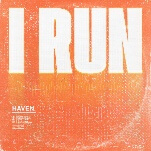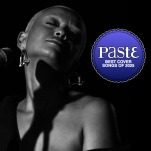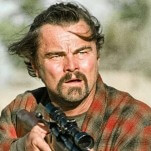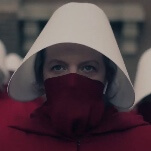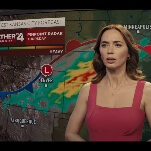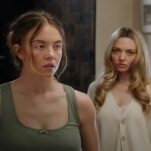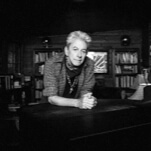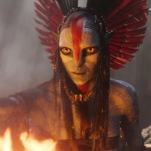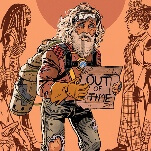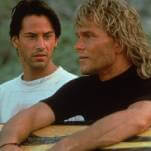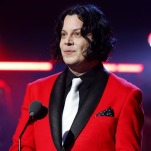Comics Panel: January 18, 2008
Over two volumes and 26 slooowwwly released issues, writer Mark Millar and artist Bryan Hitch used The Ultimates to refit The Avengers and its attendant superheroes for an age of global terror and moral ambiguity. The stories were big and violent, but also remarkably smart and surprisingly nuanced. With one issue, Ultimates 3 #1(Marvel), new writer Jeph Loeb and artist Joseph Madureira flush all that down the toilet. Loeb mistakes big for dumb and the freedom to indulge in mature themes as a license to go puerile. Madureira's art renders it as pages of muddy smears. It succeeds only as looking like a mess at every level… D
Loeb fares better with Marvel's Hulk #1. It isn't technically a relaunch, since The Incredible Hulk is still ongoing, now with Hercules as the star, but this title is now meant as the main focus of Hulk action. The red Hulk on the cover is just the first hint that things have changed, but the story veers in some unexpected directions as the Hulk's supporting cast investigates the murder of an old enemy. It's an intriguing rethink, and the prettier-than-usual Ed McGuinness art helps sell the intrigue… B
But the big Marvel reboot belongs to Spider-Man, whose main title, The Amazing Spider-Man, is now scheduled to appear three times a month. Relaunched with issue #546 under the story banner "Brand New Day," it follows the controversial "One More Day" storyline, which wiped Spider-Man's marriage to Mary Jane out of the history books. The new guys almost have it easy: Anything after that has to be less controversial. The creative team will alternate, but writer Dan Slott and artist Steve McNiven look strong out of the gate. Peter is poor and on the prowl again in the first compellingly told issue. Nothing here really moves his character forward, but superhero storytelling is ultimately more about finding ways to retell the same stories creatively anyway. Like superpowers, that's both their great power and their inhibiting responsibility… B
This past week's installments of Chris Onstad's online comic strip Achewood have mercilessly parodied the style and preoccupations of alt-comics mega-star Chris Ware, but anyone who's followed Onstad's career knows that the parodies come from a loving place. Onstad is a Ware fan, and only a Ware fan could take him apart so astutely. With the recent release of three new Ware books—The Acme Novelty Library #18, The Acme Novelty Library #18.5, and The Acme Novelty Datebook: Volume Two (all self-published, but available from Drawn & Quarterly)—devotees of the aloof cartoonist again have the opportunity to confront the mixed feelings his work often provokes. The 18th issue shelves the novel-in-progress "Rusty Brown," which dominated the previous two editions, in favor of a lengthy chapter of "Building Stories," another long-form piece that Ware has been parceling out in the pages of anthologies and magazines for the past several years. So far, "Building Stories" is the story of a chronically depressed one-legged florist and her memories of one really bad ex-boyfriend, though there are indications that the overall narrative is going to expand to include her equally mopey neighbors. Acme 18.5, meanwhile, collects Ware's somewhat goofy bird-themed New Yorker covers in an oversized portfolio that's gorgeous to behold, even though the strips within are fairly minor. As for Datebook, it's another useful look at Ware's process, reprinting four years' worth of his sketchbooks and showing how his polished, minimalist design emerges from rough life-drawings and daily ruminations on human misery. As always, Ware's (sometimes needlessly) complicated panel arrangements and his persistent wallowing in painful melancholy can be off-putting at first glance, and even the Ware faithful may wonder if his shtick is starting to get a little tired. But the sketchy versions of strips in Datebook and the layered storytelling of "Building Stories" become increasingly involving with each new page. "Building Stories" in particular contains extended stretches of narrative—as when our heroine recalls her stint as a housesitter/nanny for a rich family, or when she remembers how her only real love affair went sour—where the colors pop, the details haunt, and the simplified figures on the page carry as much emotional resonance as a wilting bouquet… #18: A-; #18.5: B; Datebook: B+
In contrast to the sophistication of Chris Ware's latest Acme books, his stint as the editor of The Best American Comics 2007 (Houghton Mifflin) is a real disappointment, overemphasizing indie- and art-comics at their crudest and most self-indulgent. (The book might as well be named "The Best Of Mome, Kramer's Ergot, and Drawn & Quarterly)" There's plenty in the book to like, including an otherwise-uncollected Ben Katchor story and some Art Spiegelman New Yorker pages, but lengthy excerpts from Alison Bechdel's Fun Home and Charles Burns' Black Hole seem a little pointless, given that those graphic novels are readily available, and it's hard to imagine that the comics novice will be enticed by the primitivist art of David Heatley, Gary Panter, and Ron Regé, whose collective style dominates the anthology. Meanwhile, adventure stories, humor strips, and other more accessible narrative comics are essentially ignored, giving a poor overall sense of what's really going on in one of the current era's most vital artforms. For next year, maybe it's time to ditch the "guest editor" concept in favor of a board of experts with more inclusive tastes… C-
Anthology fans will find a lot more variety and accessibility in Image's mammoth "mix-tape" Popgun Volume One, which reads like a 450-page answer to Villard's lovely Flight collections. The contents run from extended stories like Derek Hunter's 15-page Powerpuff Girls-esque goofy-girl-hero comic Gamma Rae to one-page posters and smirking faux-ads like Danny Hellman's sly, smirking ant-farm solicitation. While there are some kid-friendly stories, the tone runs generally darker, with ninja battles, noir murder mysteries, ghosts, vampires, monsters, zombies, and robot-on-robot violence cropping up amid the odd, alternative superheroes. Virtually all the work is colorful, entertaining, and immediate, with a strong sense of experimentation and play throughout; it's hard, in this rich an environment, for any one work to stand out. But Andy Kuhn's "Mexican Wrestler Funnies," in which two wrestlers trade Monty Python-esque barbs like "It is I who will make love to your corpse, with a Waring blender… set to puree!" is pretty hilarious, and Adrian Dominguez and Matthew Weldon's anime-influenced teen-hero story "Ellie Saves The World" is particularly gorgeous. But then, the wide variety of tones and visual styles guarantees something for just about everyone… A-





